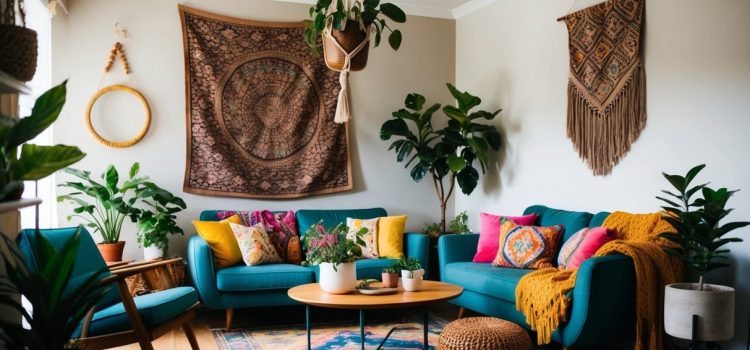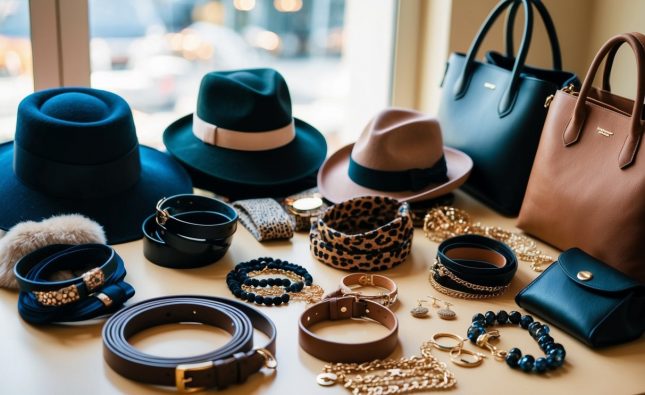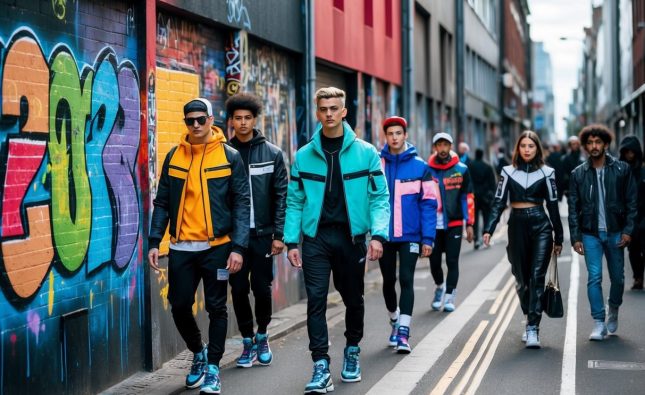
Boho style, synonymous with free-spirited living, offers a blend of vibrant colors, eclectic patterns, and relaxed silhouettes. For beginners, embracing boho style means incorporating layers, unique accessories, and natural fabrics that reflect individuality. Understanding the essence of this aesthetic is key to creating a cohesive and laid-back look that feels both personal and inviting.

This style is rooted in a love for art and nature, making it accessible to those who want to express their creativity. From flowing maxi dresses to handcrafted jewelry, boho fashion is about embracing a carefree attitude and mixing various influences. By focusing on textures and colors that resonate personally, anyone can craft a wardrobe that embodies the spirit of bohemian life.
Navigating the world of boho can be overwhelming, but with a few tips, it becomes easier to curate a stylish collection. Fashion enthusiasts can explore thrift shops for unique finds, experiment with layering, and incorporate statement pieces that showcase their personality. Armed with the right knowledge, anyone can confidently step into the world of boho style.
Understanding Boho Style
Boho style combines various influences into a unique aesthetic, rooted in history and characterized by its distinct elements. This section will explore its historical origins, essential fashion components, and the materials commonly used in Boho attire.
Historical Roots of Boho
Boho style draws from the Bohemian lifestyle and the 1960s counterculture. It emphasizes artistic expression and freedom, often blending various cultural influences.
The term “Bohemian” originally referred to artists and intellectuals living unconventional lives in cities like Paris. The style gained popularity in the 1960s and 1970s through the hippie movement, which embraced peace, love, and individuality.
Boho style often incorporates elements from various cultures, including Native American, African, and Eastern traditions. This fusion leads to a diverse and vibrant fashion scene that celebrates global artistry and influences.
Key Elements of Boho Fashion
Boho fashion is characterized by loose, flowing silhouettes and eclectic styling. Key elements include maxi dresses, peasant tops, and wide-leg pants.
Accessories play a significant role, with layered jewelry, wide-brimmed hats, and fringe bags commonly seen. Bold prints, such as florals, paisleys, and ethnic patterns, help define the look.
Layering is essential in Boho style, combining different textures and patterns for a relaxed vibe. Natural, earthy color palettes often prevail, with tones like beige, brown, and deep greens creating a harmonious appearance.
Common Fabrics and Materials
Boho fashion favors natural materials for comfort and breathability. Commonly used fabrics include cotton, linen, and silk.
Knits and crochet add texture and dimension, often seen in cardigans or accessories. Additionally, sustainable and ethically sourced materials align with the Boho ethos of environmental awareness.
Embellishments, like embroidery and beadwork, enhance garments, adding intricate details. Fringe and tassels also contribute to the style, providing movement and playfulness in the overall look.
Creating Your Boho Wardrobe
Building a Boho wardrobe involves selecting key pieces that embrace a free-spirited aesthetic. This style invites creativity through layering and the thoughtful combination of various elements.
Essential Clothing Items
Key items for a Boho wardrobe often include maxi dresses, flowy skirts, and loose-fitting blouses. These pieces typically feature vibrant prints, lace, and embroidery, reflecting a carefree vibe.
Adding wide-leg pants or culottes can enhance comfort and flexibility. Opt for natural fabrics like cotton, linen, and rayon for breathability.
Layering is important; include lightweight cardigans, kimono jackets, or shawls for transitional seasons. Footwear choices often favor boots or strappy sandals, adding to the relaxed feel.
Accessorizing in Boho Style
Accessories play a vital role in achieving a true Boho look. Layered necklaces, chunky bracelets, and oversized rings bring personality to outfits. Often, these items incorporate natural materials like stone, wood, or leather.
Hats can complete the ensemble. Wide-brimmed hats or beanies add an extra touch of style.
Bags should lean toward the slouchy side, with fabrics like suede or woven materials. Fringe details are common and enhance movement.
Mixing Patterns and Textures
Pattern mixing is essential for the Boho aesthetic. Stripes, florals, and ethnic prints can be combined to create a unique look. The key is to maintain a cohesive color palette.
Textures also contribute significantly. Pairing soft, flowy fabrics with sturdier options, like denim or crochet, adds depth.
Layering different textures, such as silk with leather or knitwear, can elevate an outfit. The goal is to maintain balance while expressing individual style boldly.
Incorporating Boho Style at Home

To create a bohemian atmosphere in a living space, one should focus on embracing eclectic elements, natural materials, and personal touches. This style encourages creativity and individual expression, making it ideal for those seeking a unique home environment.
Boho-Chic Interior Design Principles
Incorporating Boho style begins with understanding its core principles. Key elements include layering textures, using a mix of patterns, and integrating natural materials like wood and stone.
Color palettes should favor rich, earthy tones alongside vibrant hues. Lighting plays a vital role; consider using warm pendant lights or string lights to create a cozy ambiance.
Personal items such as travel souvenirs and handmade crafts enhance the bohemian vibe. Furniture arrangements can be relaxed, often featuring floor cushions and low tables to promote a laid-back atmosphere.
Selecting Furniture and Decor
When choosing furniture for a boho space, opt for vintage or thrifted pieces that add character. Uniqueness is key; items should tell a story. For seating, consider a mix of chairs and benches with varied upholstery.
Decorative elements should be abundant yet curated. Use indigenous textiles, like woven rugs or wall hangings, to introduce warmth and culture. Incorporate plants for a touch of nature; hanging planters or large potted plants can create a vibrant focal point.
Wall art should reflect personal interests—maps, photographs, or artwork from various cultures are excellent selections. Layering rugs can enhance coziness and bring visual depth to the space.
Maintaining Your Boho Pieces
Proper care and preservation techniques will extend the life of Boho clothing, accessories, and decor items. Following specific guidelines can ensure these pieces maintain their unique character and beauty.
Care Tips for Boho Clothing and Accessories
Boho clothing and accessories often feature delicate fabrics and intricate designs. Care is essential to avoid damage.
-
Washing: Always check labels for washing instructions. Hand washing in cool water with mild detergent is advisable for most items.
-
Drying: Lay items flat to dry or hang them in a shaded space. Avoid direct sunlight to prevent fading.
-
Storage: Use breathable garment bags for clothing. Avoid plastic covers, which trap moisture and can cause mildew.
-
Ironing: If needed, iron on a low setting using a cloth barrier to protect delicate fabrics.
-
Spot Cleaning: For small stains, use a gentle stain remover tailored for delicate fabrics.
Preserving Boho Decor Items
Boho decor items often include natural materials, textiles, and intricate crafts. Proper handling ensures their longevity.
-
Dust Regularly: Use a soft cloth to dust decor items weekly to prevent buildup.
-
Avoid Direct Sunlight: Place items away from direct sunlight to prevent fading and warping.
-
Humidity Control: Maintain a stable environment. Avoid areas with excessive humidity, which can damage wood or fabric.
-
Clean with Care: For fabric items, vacuum gently. Wooden pieces can be cleaned with a soft, slightly damp cloth.
-
Repair and Upcycle: If items show wear, consider simple repairs or creative upcycling to give them new life.
By adhering to these care and preservation techniques, one can maintain the integrity of Boho pieces for years to come.












